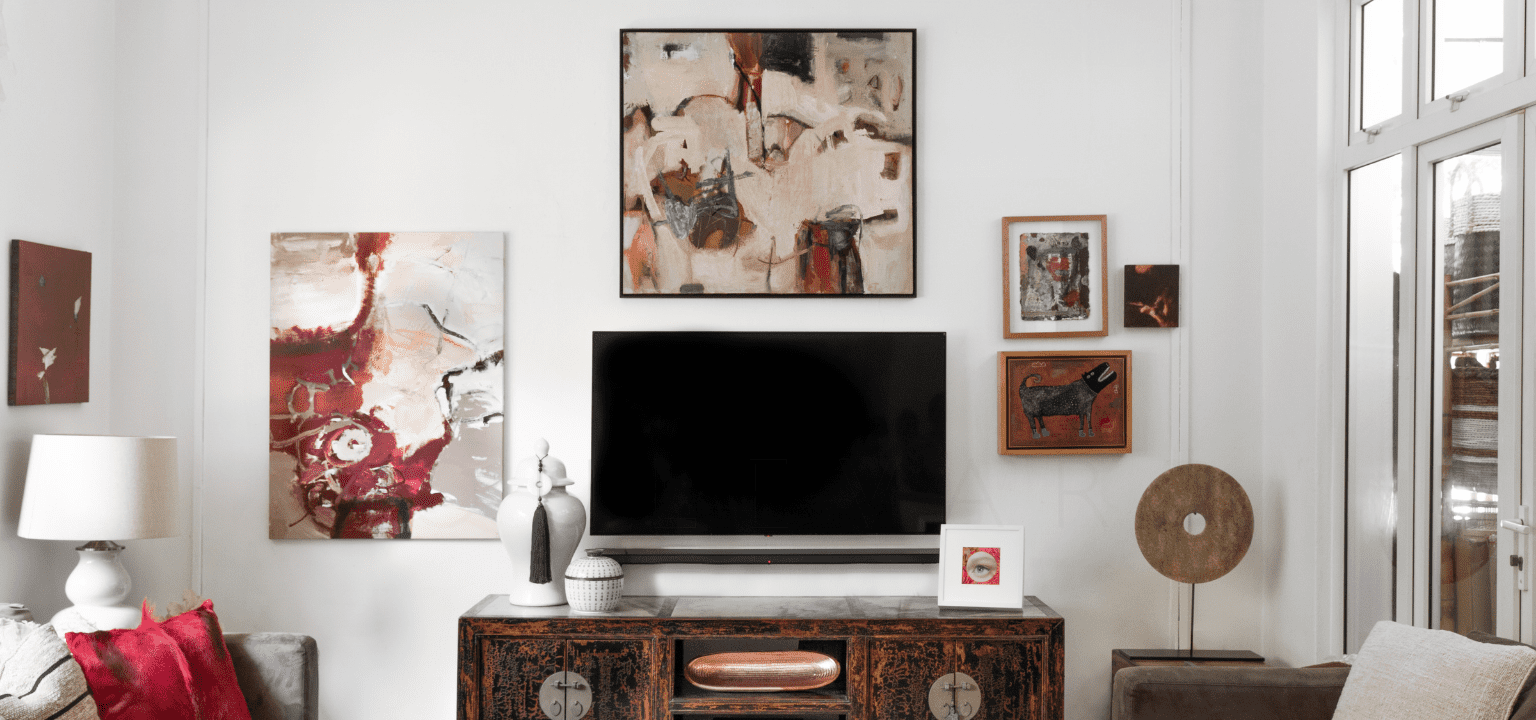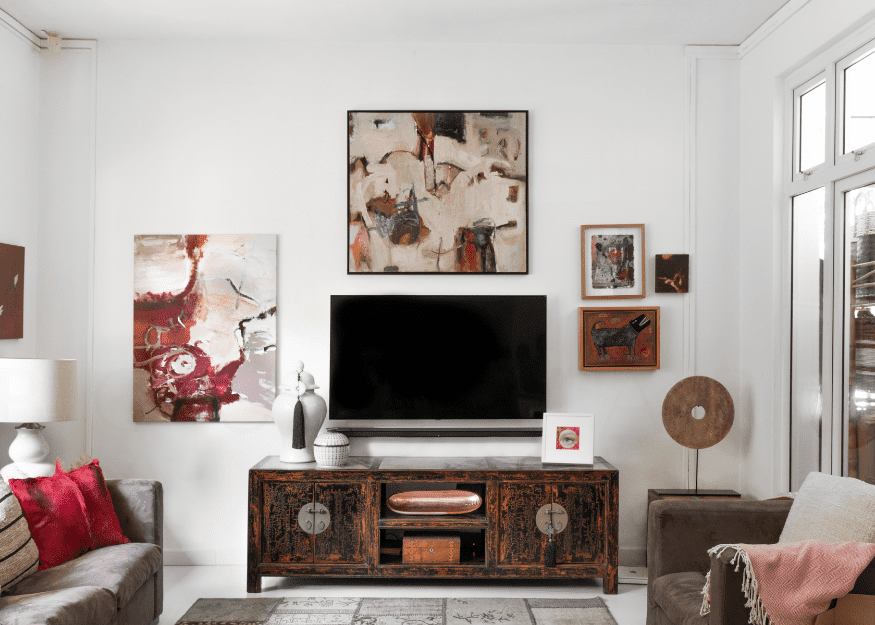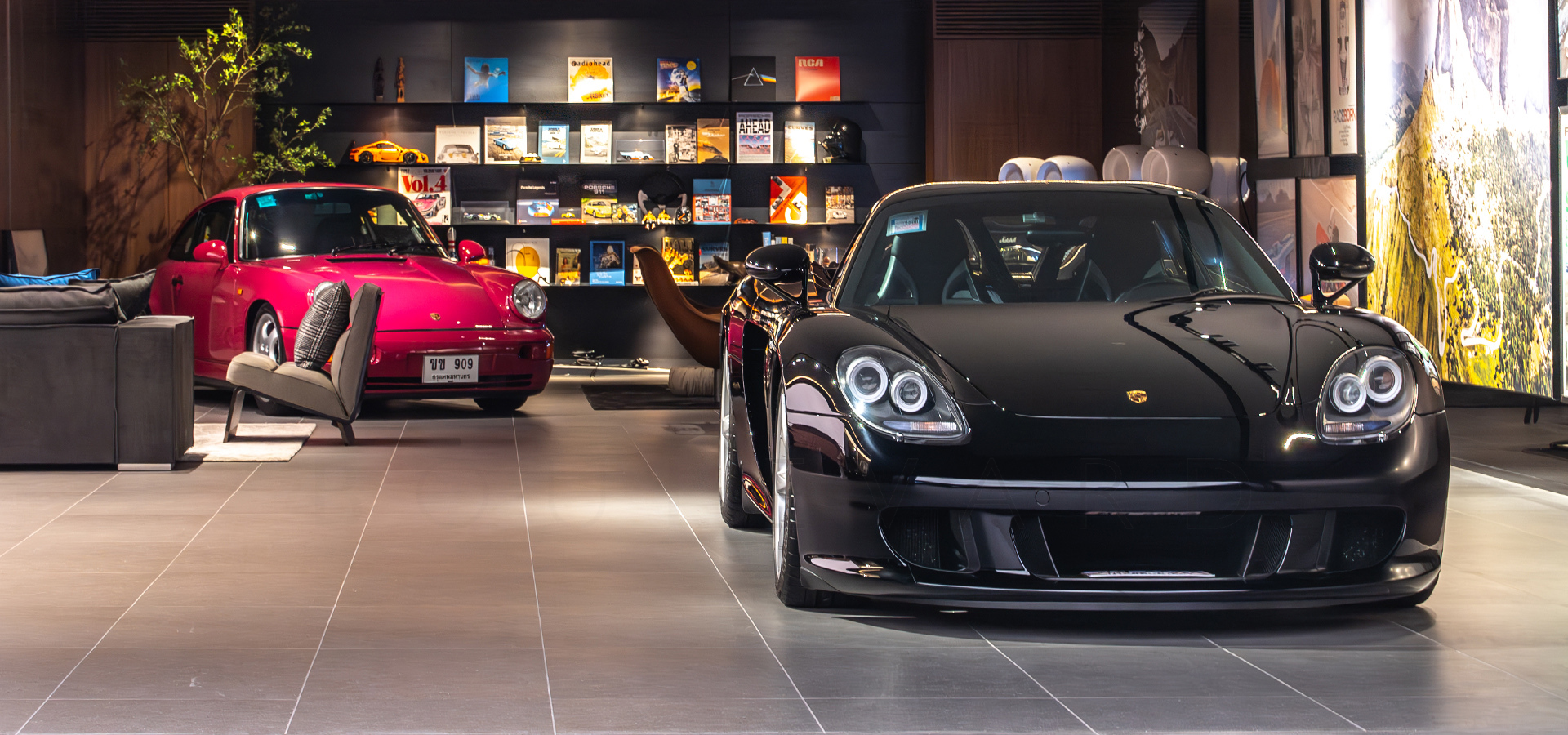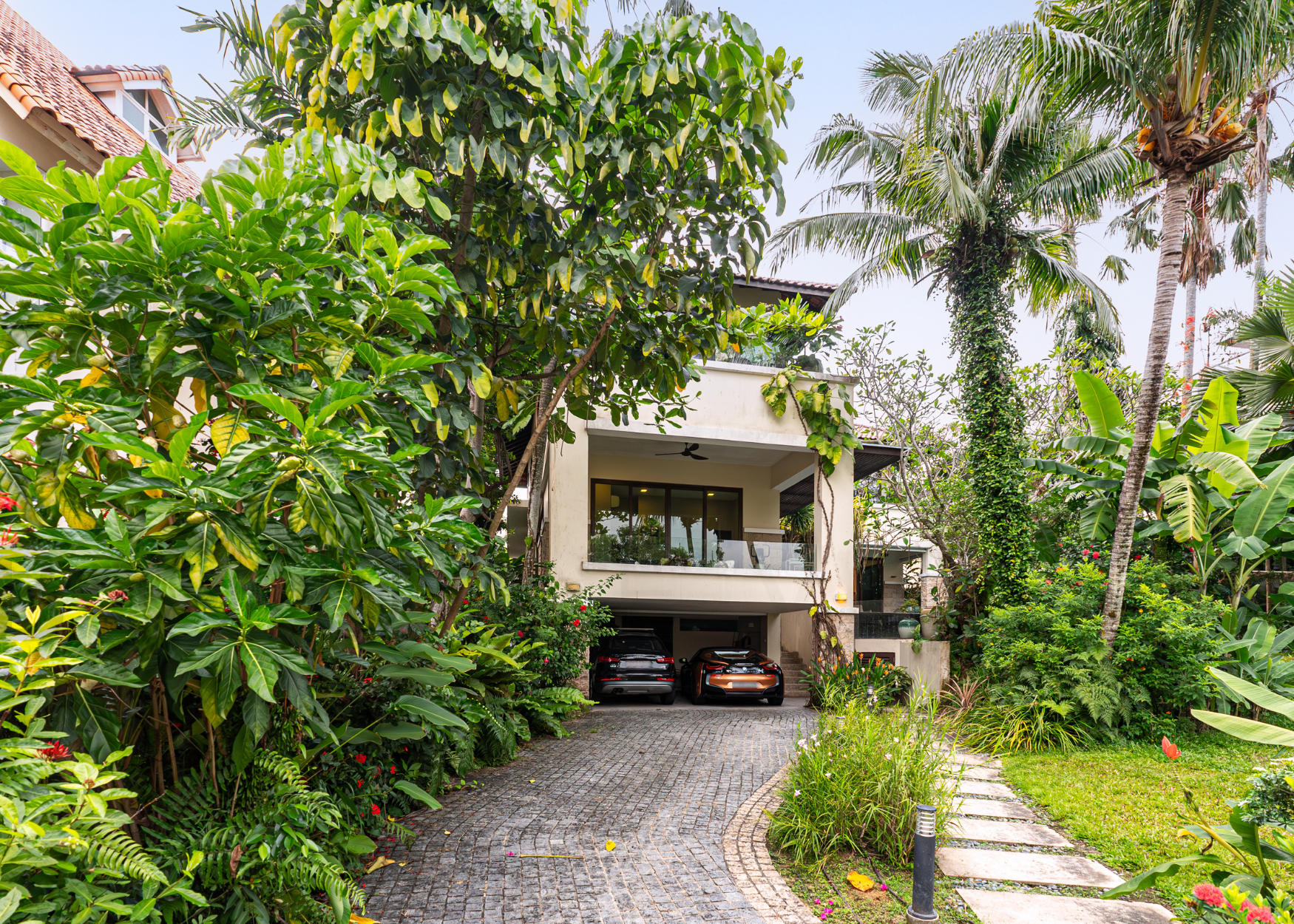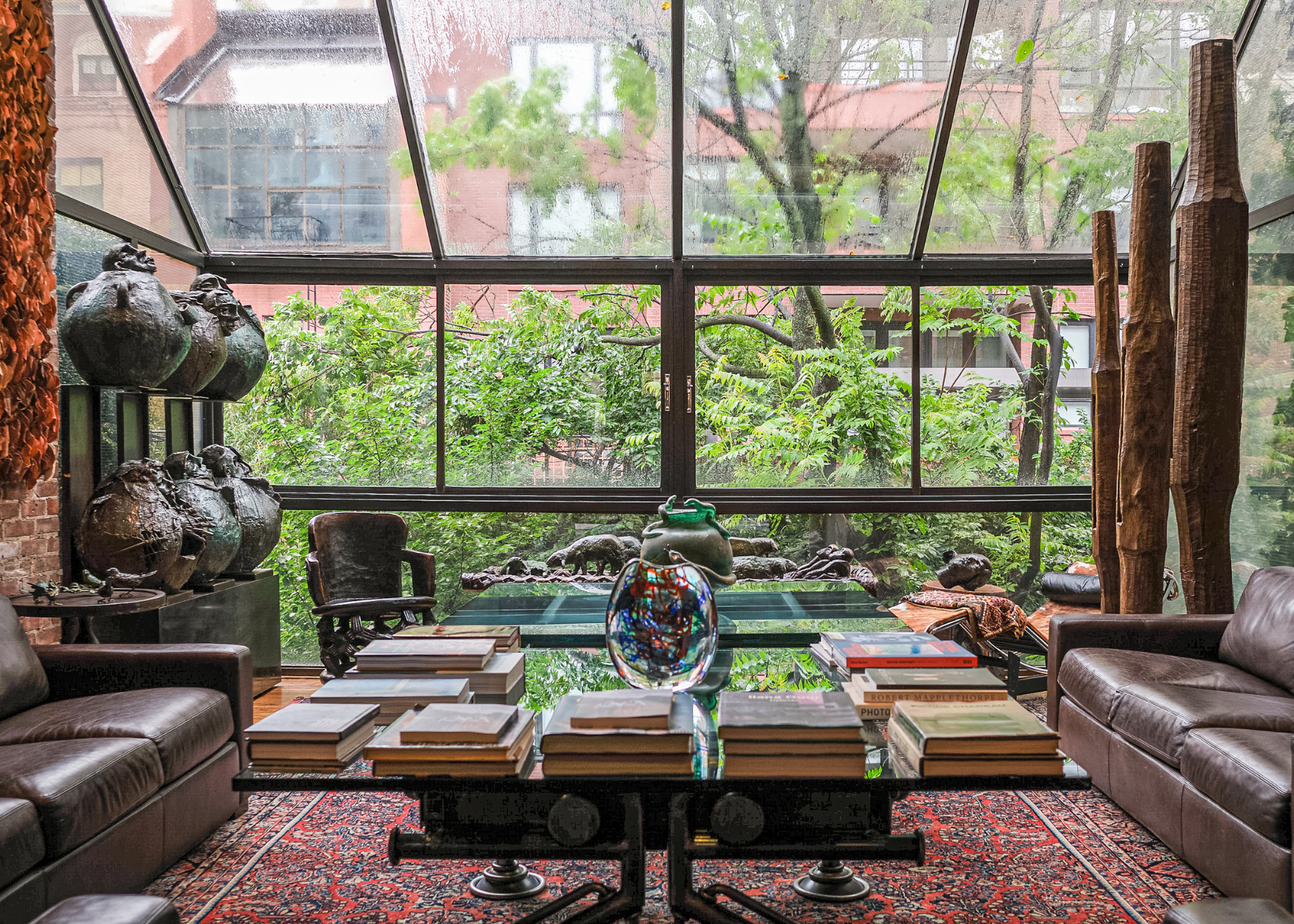Home tour: Inside art collector Anna Layard’s enviably curated house
“I’m not into minimalism,” says Anna Layard. As an art historian, consultant and founder of Layard Interiors, it would be almost criminal if she were to pare back the artefacts, paintings and sculptures in her home.
Layard’s life path and career in the art world are closely intertwined, taking her from her native UK, where she ran a gallery in the heart of London focusing on investment pieces, to Australia, where she was art director and curator for a European Masters gallery. A move to Singapore in 2009 and going solo as an art consultant saw her curate the first-ever exhibition in the Australian High Commissioner’s residence, and consult for the likes of Facebook and Lend Lease.
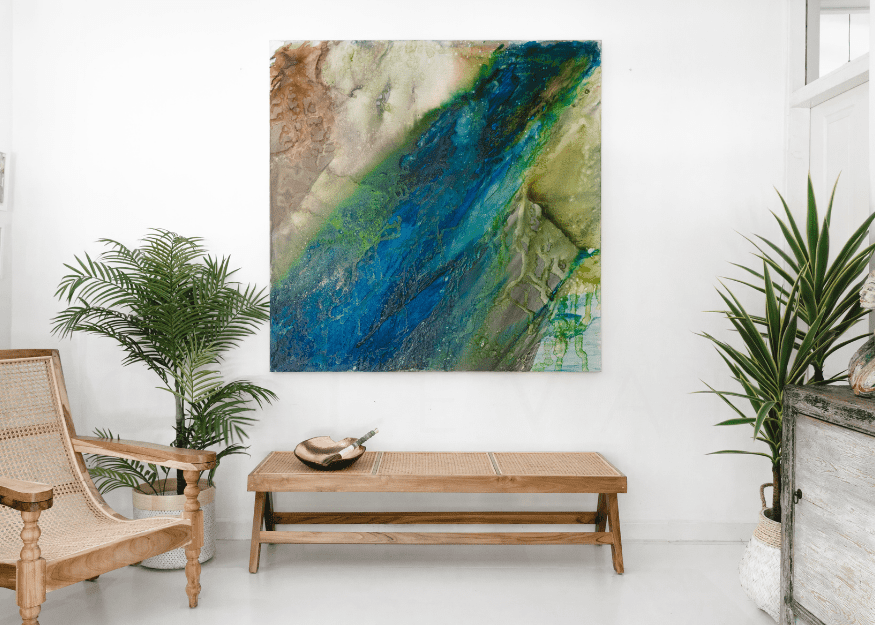
Years of travels in the tropics has also left its mark on her interior style. Antique Asian furniture and curios mingle with luminous capiz shell decor, stunning forms of ancient petrified wood and elegant rattan furniture from her eponymous brand, creating layers of texture – and opportunities for endless storytelling.
Unsurprisingly, the family home is also a living gallery, and Layard jokes that her husband and kids always come home to something different. “I have no idea how much art I have,” she ventures when asked about her personal collection. “But it’s an obscene amount.” The collection spans evocative abstract paintings from contemporary Javanese artists, to political works on paper by the stencil and street artist Luke Cornish (aka ELK), to striking pieces by emerging artists she’s discovered at local fairs.
“I think very little about where it is going to go, but rather,
how it makes me feel. ”
Of her approach, she opines that logically, she should be focusing on a narrative of Australian or Asian art. “But I really do just buy what I like,” she says. “In art collector mode I buy purely on passion and connection to a piece. I think very little about where it is going to go, but rather how it makes me feel, and the significance it has to me in that place and time. Every artwork on my walls has a story, and, in turn, tells mine.”
The affinity for Southeast Asian art took hold early: Layard explored Batik art in high school in the UK, and then based her university thesis on Balinese art – perhaps an unexpected endeavour from Manchester, but this focus helped her land a research trip to Bali.
Years later Layard was living in Singapore, travelling around Asia and conducting art and meditation retreats in Indonesia. It was while taking clients to artist studios and the homes of collectors, that she felt an artistic homecoming. “I felt I was back where I should be,” she says.
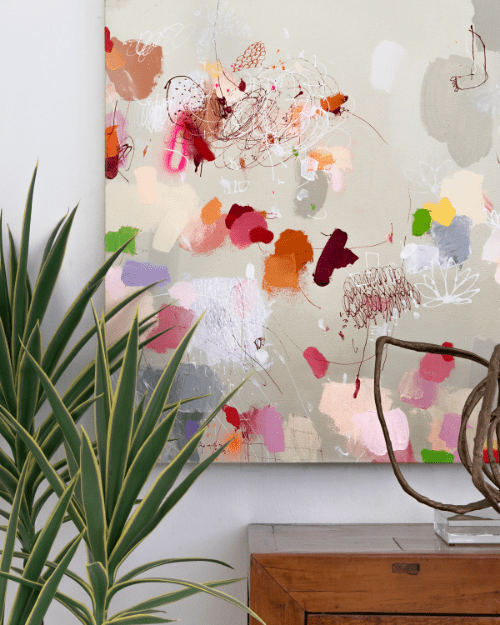
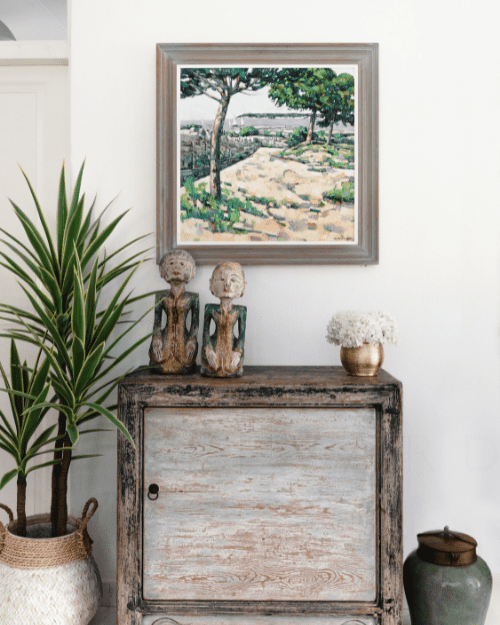
“I think Indonesia is the most exciting Asian art scene at the moment – there’s so much talent, and within the hierarchy of the art community they’re all supporting each other. It’s like family,” she explains. Layard has been working largely with Indonesian artists over the past few years. “Favourites I’ve added to my personal collection are Jumaldi Alfi, Indra Dodi, Danni Febriana, Amin Taasha and Yoyok Siswoyo. It’s the most exquisite art market I’ve ever worked with.”
A spectacular black-and-white by young Indonesian artist Danni Febriana, 2019 finalist in the Indonesia UOB Painting of the Year competition, is a case in point. Rendered in charcoal, Merapi, Rereading History resonates deeply with Layard, referencing landscapes and rituals that evoke memories of her treasured retreats.
There are more large-scale works, down to small pieces that are equally stunning. A striking woman’s eye, by Jennifer Chalklen, a New Zealand contemporary realist based in Singapore, reveals Layard’s instinct for compelling works by emerging artists.
When pressed on her personal approach to collecting, versus her strategy in art consultant mode, she speaks of the varied needs of her clients.
“With my corporate clients, we will think much more about brand alignment and whether they are looking to form an investment collection,” she says. Considerations include budget, genre, colour palette, physical placement and therefore size – but there’s one element inherently different to selecting works for a client’s home.
“While I would like all artworks I place to be admired and appreciated, corporate clients don’t seek the same emotional connection and attachment.”
“It involves a lot of trust,” says Layard of her consulting work with private clients, a growing number of whom are discovering her expertise after falling in love with pieces from Layard Interiors. “Invariably, when choosing art for the home, you also need to take into account what matters to two people with very different tastes,” she adds. “Luckily, I have free reign over the art in our home,” she quips.
“Art can be a great investment, but it will always be a longer one, so make sure you enjoy it along the way. ”
On the art of investing, Layard recalls her first venture. “I made my first investment with my very first pay packet: a small watercolour by former President of the Royal Academy, Sir Hugh Casson. I still have it, and still love it,” she says. So her advice for others, whether buying for investment or otherwise, comes as no surprise.
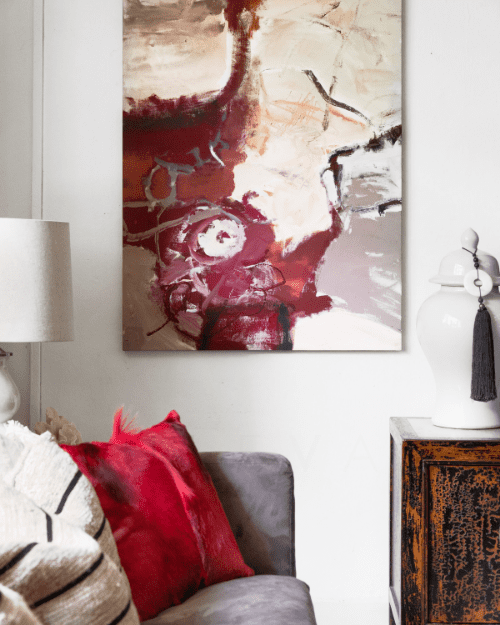
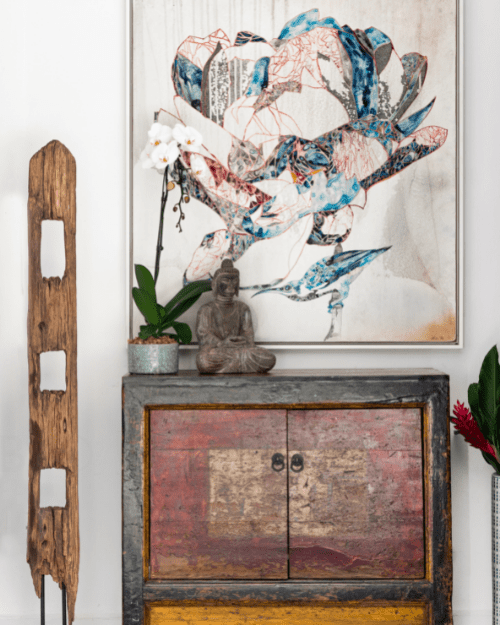
“As trite as it sounds, I truly believe you should fall in love with the piece,” she says. “It should give you inherent pleasure when you look at it. Art can be a great investment but it will always be a longer one, so make sure you enjoy it along the way.”
“Be informed about what you are buying,” she adds. “An artwork doesn’t have to be expensive to be good. Ask about the artist’s training and exhibiting history. Buy quality over quantity.”
As much as she champions the investment side of the works of compelling artists, and the Asian art scene generally, Layard is an advocate for living with and enjoying art. “Living with art is so important as it transforms a space,” she says. “It should reflect your personality, tell your story and inspire you each day.”
Go further with Anna Layard: Layard Interiors
Where to now?
